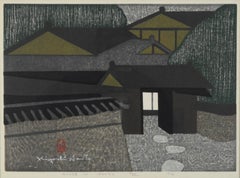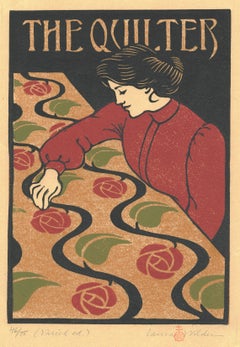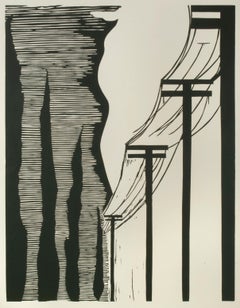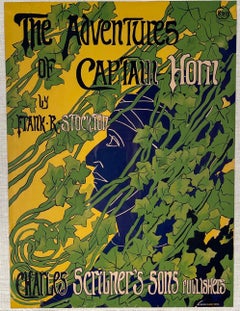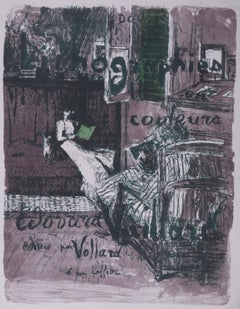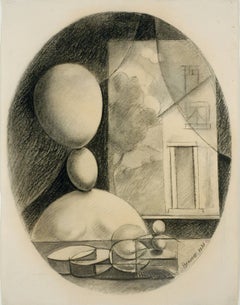International Fine Print Dealers Association Art
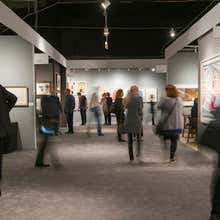
Launched in 1987, the International Fine Print Dealers Association has continually set the bar for quality and ethics while promoting prints as original works of art to generations of collectors, curators and art lovers. With over 160 members in 13 countries, the IFPDA is a worldwide community of leading dealers and editions publishers who represent the full spectrum of printmaking. Each year, the IFPDA hosts the IFPDA Print Fair in New York, the only major fair dedicated to fine-art prints.
1960s Contemporary International Fine Print Dealers Association Art
Woodcut
1990s Contemporary International Fine Print Dealers Association Art
Woodcut
1980s Contemporary International Fine Print Dealers Association Art
Linocut
Early 1900s International Fine Print Dealers Association Art
Lithograph
1890s Post-Impressionist International Fine Print Dealers Association Art
Lithograph
1930s Surrealist International Fine Print Dealers Association Art
Charcoal
16th Century Old Masters International Fine Print Dealers Association Art
Engraving
1880s Art Nouveau International Fine Print Dealers Association Art
Lithograph
1980s International Fine Print Dealers Association Art
Etching, Aquatint
1950s International Fine Print Dealers Association Art
Etching
1990s Contemporary International Fine Print Dealers Association Art
Lithograph
1930s Art Deco International Fine Print Dealers Association Art
Graphite
1970s Abstract International Fine Print Dealers Association Art
Etching
Early 20th Century Other Art Style International Fine Print Dealers Association Art
Gouache
Mid-20th Century International Fine Print Dealers Association Art
Ink
1970s American Modern International Fine Print Dealers Association Art
Acrylic
1890s Art Nouveau International Fine Print Dealers Association Art
Lithograph
1970s American Modern International Fine Print Dealers Association Art
Mixed Media
1950s American Realist International Fine Print Dealers Association Art
Ink
1910s Vienna Secession International Fine Print Dealers Association Art
Linocut
18th Century Other Art Style International Fine Print Dealers Association Art
Watercolor, Engraving
1960s International Fine Print Dealers Association Art
Etching
1940s International Fine Print Dealers Association Art
Woodcut
1840s International Fine Print Dealers Association Art
Woodcut
Mid-20th Century International Fine Print Dealers Association Art
Ink
1960s American Modern International Fine Print Dealers Association Art
Ink
1970s Abstract International Fine Print Dealers Association Art
Engraving
2010s Contemporary International Fine Print Dealers Association Art
Etching, Intaglio
1960s Abstract International Fine Print Dealers Association Art
Watercolor, Gouache
1910s American Realist International Fine Print Dealers Association Art
Drypoint
1930s American Realist International Fine Print Dealers Association Art
Etching
1930s International Fine Print Dealers Association Art
ABS, Engraving, Woodcut
1970s Contemporary International Fine Print Dealers Association Art
Mezzotint
1890s Art Nouveau International Fine Print Dealers Association Art
Lithograph
Late 20th Century Contemporary International Fine Print Dealers Association Art
Color Pencil
1910s American Realist International Fine Print Dealers Association Art
Watercolor
1980s Naturalistic International Fine Print Dealers Association Art
Photographic Paper
1980s International Fine Print Dealers Association Art
Photographic Paper
Early 2000s Abstract International Fine Print Dealers Association Art
Digital
1920s French School International Fine Print Dealers Association Art
Lithograph
2010s Contemporary International Fine Print Dealers Association Art
Watercolor
1920s International Fine Print Dealers Association Art
Drypoint
20th Century American Realist International Fine Print Dealers Association Art
Etching
1950s International Fine Print Dealers Association Art
Alkyd, Woodcut
1930s American Impressionist International Fine Print Dealers Association Art
Oil
1970s Op Art International Fine Print Dealers Association Art
Screen
1960s American Modern International Fine Print Dealers Association Art
Lithograph
1980s Contemporary International Fine Print Dealers Association Art
Offset
1890s Art Nouveau International Fine Print Dealers Association Art
Lithograph
1930s Cubist International Fine Print Dealers Association Art
Graphite
1980s International Fine Print Dealers Association Art
Lithograph
1970s Abstract Geometric International Fine Print Dealers Association Art
Aquatint
1920s Modern International Fine Print Dealers Association Art
Lithograph
Late 20th Century Contemporary International Fine Print Dealers Association Art
Intaglio
1990s Contemporary International Fine Print Dealers Association Art
Woodcut
1920s American Modern International Fine Print Dealers Association Art
Ink
1960s Abstract International Fine Print Dealers Association Art
Mixed Media
1970s Abstract Geometric International Fine Print Dealers Association Art
Screen
Late 20th Century Contemporary International Fine Print Dealers Association Art
Lithograph
1870s Art Nouveau International Fine Print Dealers Association Art
Etching
